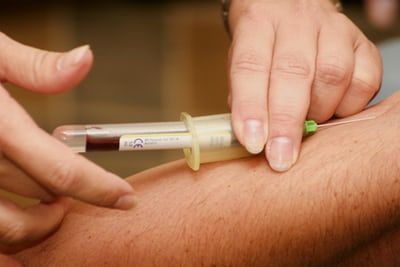University of Warwick develops A.I. technology for tracking blood glucose
Tracking sugar in the blood is crucial for both healthy individuals and diabetic patients. However, current methods to measure glucose requires needles and repeated fingerpricks over the course of a day. Owing to the painful nature of fingerpricks, patient compliance is often low. In order to combat this, researchers at the University of Warwick have developed a new technique which uses artificial intelligence to detect hypoglycaemic events from raw electrocardiogram (ECG) signals, via non-invasive sensors. This technology works with 82% reliability and could therefore replace the need for invasive finger-prick testing with a needle. This could be particularly useful for paediatric age patients.
Low glucose, or hypoglycaemia, can cause an increase in heart rate and systolic blood pressure and lead to heart palpitations. It can also affect the heart’s electrical activity. Currently, the NHS offers Continuous Glucose Monitors (CGM) for hypoglycaemia detection. These devices work by measuring glucose in interstitial fluid using an invasive sensor with a little needle, which sends alarms and data to a display device. In many cases, CGMs require calibration twice a day and, as already mentioned, invasive finger-prick blood glucose level tests.
Low glucose, or hypoglycaemia, can cause an increase in heart rate and systolic blood pressure and lead to heart palpitations
A team of Warwick academics, led by Dr. Leando Pecchia, published a paper in the Nature Springer journal Scientific Reports proving that using the latest findings of artificial intelligence (i.e. deep learning), they can detect hypoglycaemic events from raw ECG signals acquired with off-the-shelf wearable sensors.
The paper, titled ‘Precision Medicine and Artificial Intelligence: A Pilot Study on Deep Learning for Hypoglycemic Events Detection based on ECG’, chronicled the findings of two pilot studies with healthy volunteers. With an average sensitivity and specificity of roughly 82% for hypoglycaemia detection, this new method is comparable with current CGM performance, only it has the added benefit of being non-invasive. The study followed eight participants, asking them to wear ECG monitors for 24 hours a day for two weeks. None were diabetic but the researchers said that the principle would still apply.
Using the latest findings of artificial intelligence (i.e. deep learning), they can detect hypoglycaemic events from raw ECG signals
Dr Pecchia, from Warwick’s School of Engineering, commented: “Fingerpricks are never pleasant and in some circumstances are particularly cumbersome. Taking fingerprick during the night certainly is unpleasant, especially for patients in paediatric age.”
He added: “Our innovation consisted in using artificial intelligence for automatic detecting hypoglycaemia via a few ECG beats. This is relevant because ECG can be detected in any circumstance, including sleeping.” Dr Pecchia, the co-author of the paper, also stated: “Our approach enabled personalised tuning of detection algorithms, and clinicians can adapt the therapy to each individual. Clearly more clinical research is required to confirm these results in wider populations.”

Comments